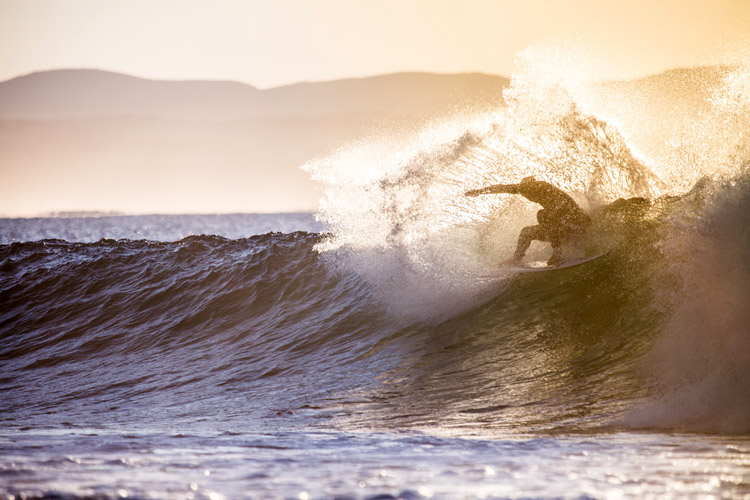Choosing a wave is easy, but picking a good wave requires using our brains and experience. In the end, it's all about maximizing our time in the water and having fun. Take a look at everything you need to know about wave selection.
In surfing, wave selection is an art, and it usually draws the line between beginners and intermediate/advanced surfers.
For beginner surfers, waves are often all the same, and everything goes down to how big they are because they don't know how to read waves.
But if you're more into quality over quantity, then you should begin focusing on advanced wave selection methods.
It comes with age and experience, and it pushes you to become a better surfer.
Wave selection has several impacts on your surf session. The first and most obvious one is that you ride better and longer waves.
Then, you'll also need less physical effort to paddle for a wave. And that will save you a lot of energy.
Ultimately, you'll lose fewer waves, and you won't need to ask a crowded lineup permission to ride.
Let's see how you can improve wave selection in surfing:
1. Watch How the Swell Builds In the Horizon
Before paddling out and while in the water, observe the arrival of the waves and where you should be to catch them.
2. Monitor the Lineup
Watch who's getting the best waves, why they're scoring, and where you can find a balanced quality wave/crowd factor ratio.
3. Anticipate Tide Changes
Learn the "Rule of Twelfths" technique and understand how rising and falling tides will affect the wave peak.
4. Calculate the Average Wave Period
Try to mentally clock the time between sets so that you know and feel when to go.
5. When in Doubt, Paddle Earlier
If you notice that the right wave is coming for you, initiate your paddling maneuvers and position yourself in the ideal spot.
6. Scan and Study Potential Peak Alternatives
Get a Plan B in case your favorite take-off zone is getting crowded or less perfect.
7. Confirm Your Optimal Positioning
Make regular triangulation analyses to ensure you're in the sweet spot.
8. Be Discreet
Don't yell, whistle, or draw attention to an incoming quality wave - you can also pretend you're taking the first roller of the set to mislead others and ride the second one.
9. Learn More About the Different Types of Waves
There are four main types of breaking waves, and you must know when and where to ride them efficiently.
10. Feel the Wind Changes in Speed and Direction
The wind has a profound impact on the waves, so try to make sure you adapt to the constant shifts that occur throughout your surf session.
11. Spot the Effects of Sandbanks or Rocky Bottoms in the Breaking of the Waves
The interaction between tides and the ocean floor can change the wave-riding conditions of surf break in less than an hour - pay attention to the subtle variations taking place in your favorite peak.
12. Be Patient and Cold-Blooded
It's never easy to watch others score dozens of waves, but many times, it is worth waiting.
13. Paddle In to Reassess the Conditions
Take a new and updated look from the beach at how the breaking of the waves changed since you've paddled out.
14. A Three-Foot Gem Is Better Than a Six-Foot Closeout
If the inside zone is pumping perfect-peeling waves, don't think twice - go for it.
15. Go For the Peak
Surfers who don't position themselves in the take-off zone are losing wave-riding potential.
Need quantity over quality? Discover a few tips to increase your wave count.
